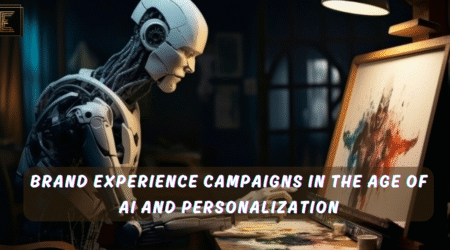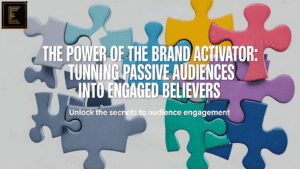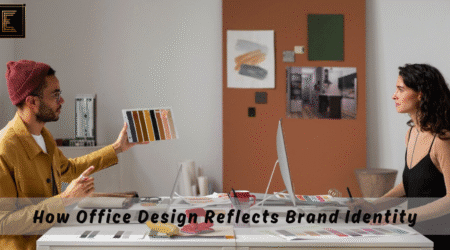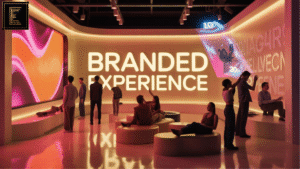In today’s crowded and competitive market, consumers no longer choose brands just for price or product features—they choose experiences.
As AI-powered campaigns and personalized marketing become the new standard, brands must go beyond traditional advertising. They need to create immersive experiences that emotionally connect with their audience. This is where brand experience campaigns and experiential design come into play.
In this blog, we’ll explore how personalization and AI are transforming brand engagement and how brands can lead by designing experiences that are smart, personal, and unforgettable.
What Are Brand Experience Campaigns?
Brand experience campaigns are marketing strategies designed to connect with customers on a deeper emotional level. Unlike traditional ads that simply inform, these campaigns immerse the audience in the brand’s world.
Key Characteristics:
- Sensory-driven – touch, sound, visuals, and emotion
- Interactive – two-way communication with the brand
- Emotional – leaves a lasting impression
- Shareable – designed for social media and word-of-mouth
Popular Types of Brand Experience Campaigns:
- Pop-up events and installations
- Virtual and augmented reality (VR/AR) activations
- Interactive digital campaigns
- Themed brand experiences in retail or public spaces
These campaigns create strong emotional ties and help turn everyday customers into passionate brand advocates.
Why AI and Personalization Are Changing the Game
1. Smarter Targeting Through AI
Artificial Intelligence allows brands to gather real-time insights on:
- Consumer behavior
- Purchase history
- Online browsing activity
- Social media interactions
Using this data, brands can create highly targeted personalized marketing campaigns that speak directly to individual needs and interests.
2. More Meaningful Personalized Experiences
When consumers feel like a brand understands them, they’re more likely to engage and stay loyal. Examples of personalization include:
- Custom event invitations
- Personalized product recommendations
- Interactive AR filters tailored to user preferences
3. Automation + Creativity = Scalable Campaigns
AI enables real-time updates and content changes based on user behavior without sacrificing creativity. Tools like:
- Dynamic Creative Optimization (DCO)
- AI content generators
- Behavior-triggered campaigns
…allow marketers to scale immersive experiences without losing the emotional touch.
Real-World Examples of AI in Brand Experience Campaigns
| Feature | Description | Example |
| Emotion Detection | AI-powered cameras read facial expressions and adjust content accordingly | Digital billboards that change based on viewer’s mood |
| Personalized AR Filters | Custom AR experiences based on user data | Snapchat or Instagram filters based on user profile |
| Dynamic Event Journeys | Event paths and product suggestions tailored to each visitor | Smart booths recommending products at expos |
| Virtual Brand Ambassadors | AI chatbots guiding users through the campaign | AI-driven concierge at a retail event |
These applications make the brand journey unique for every customer, increasing satisfaction and brand engagement.
The Role of Experiential Design in Emotional Engagement
While technology powers personalization, it’s the emotional element that truly moves people. That’s why experiential design is critical in creating meaningful brand connections.
How Experiential Design Enhances Campaigns:
- Emotion-first thinking – put feelings before functions
- Narrative structure – build a story around the experience
- Sensory engagement – use sound, lighting, scent, and space
- Inclusive design – accessible to all types of users
A campaign driven only by data may attract-but a campaign designed for emotion converts.
The Future of Brand Experience Campaigns
The future of branding lies in phygital (physical + digital) experiences that feel seamless and intuitive.
Emerging Trends:
- Hyper-personalization: No more one-size-fits-all campaigns
- Live data feedback loops: Campaigns that evolve in real-time
- Sustainability in design: Eco-conscious experiences
- Collaborations with experiential design agencies for holistic campaigns
Consumers will expect personalized, AI-enabled experiences across every brand interaction.
Why Partner with Experiential Design Agencies
To keep up with AI and personalization, brands need a strategic partner that understands both technology and emotional design.
Benefits of Working with an Experiential Design Agency:
- Aligns brand goals with human behavior
- Delivers seamless physical-digital integration
- Provides a blend of creative storytelling + AI tools
- Ensures campaigns are measurable and impactful
Agencies offer the complete package: strategy, creativity, and tech, all under one roof.
Conclusion
In the age of AI-powered campaigns and personalized marketing, brands must focus on creating memorable, emotionally rich experiences. Brand experience campaigns that are designed with empathy, powered by AI, and guided by smart experiential design will win the hearts of modern consumers.
Takeaway:
- Technology personalizes.
- Design humanizes.
- Together, they create lasting brand loyalty.
Call to Action:
Ready to elevate your brand? Collaborate with an experiential design agency to create immersive, emotionally engaging campaigns that your audience will never forget.
FAQs
1. What is a brand experience campaign?
A brand experience campaign is a marketing strategy that focuses on creating interactive and emotional experiences that engage customers on a deeper level.
2. How does AI improve brand engagement?
AI enables brands to analyze customer data in real time, personalize messaging, and create dynamic experiences tailored to individual preferences.
3. What is experiential design?
Experiential design combines storytelling, technology, and sensory elements to craft immersive brand experiences that emotionally resonate with consumers.
4. Why is personalized marketing important today?
Personalized marketing increases relevance, improves customer satisfaction, and builds stronger brand loyalty by making each interaction feel personal and thoughtful.
5. What are some examples of immersive brand experiences?
Examples include AR product try-ons, VR-based showrooms, interactive pop-up events, and AI-powered virtual assistants at branded activations.







